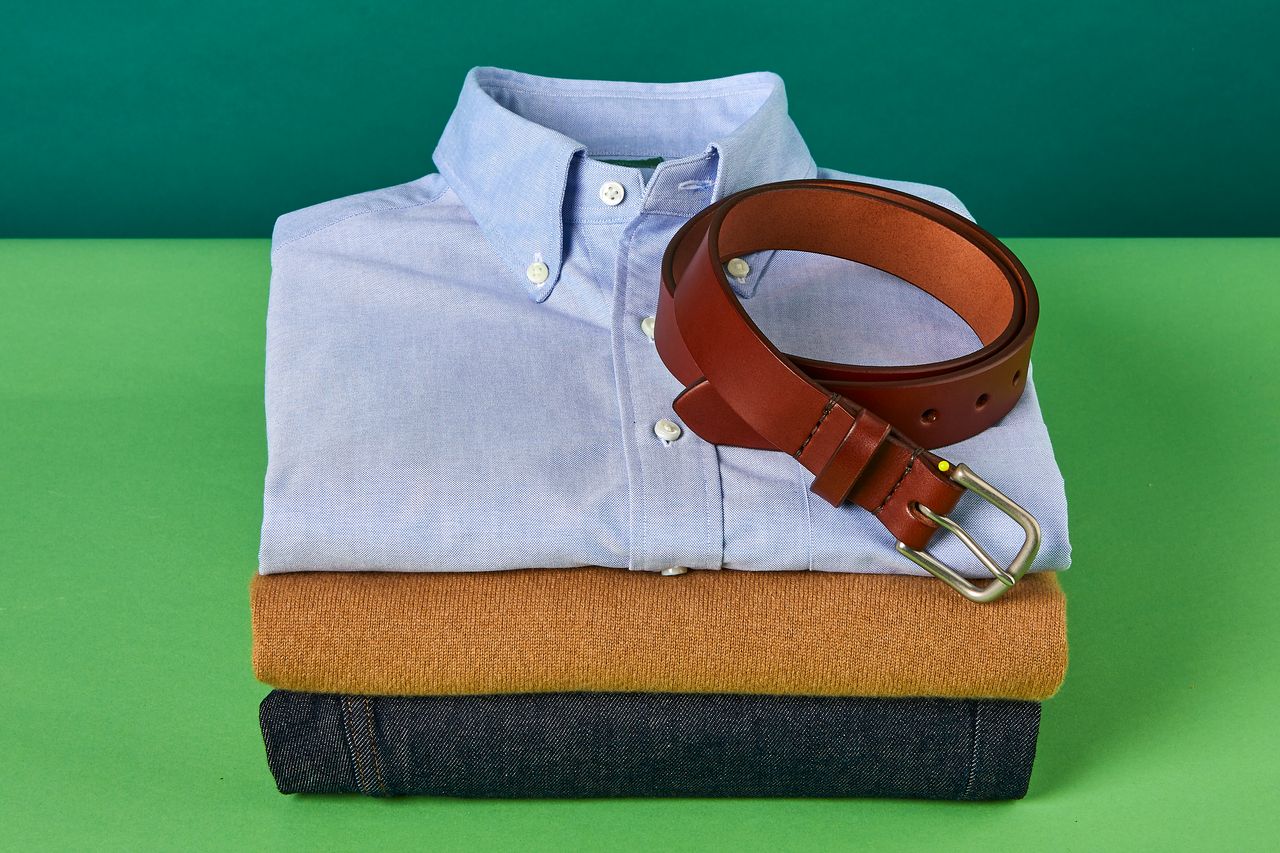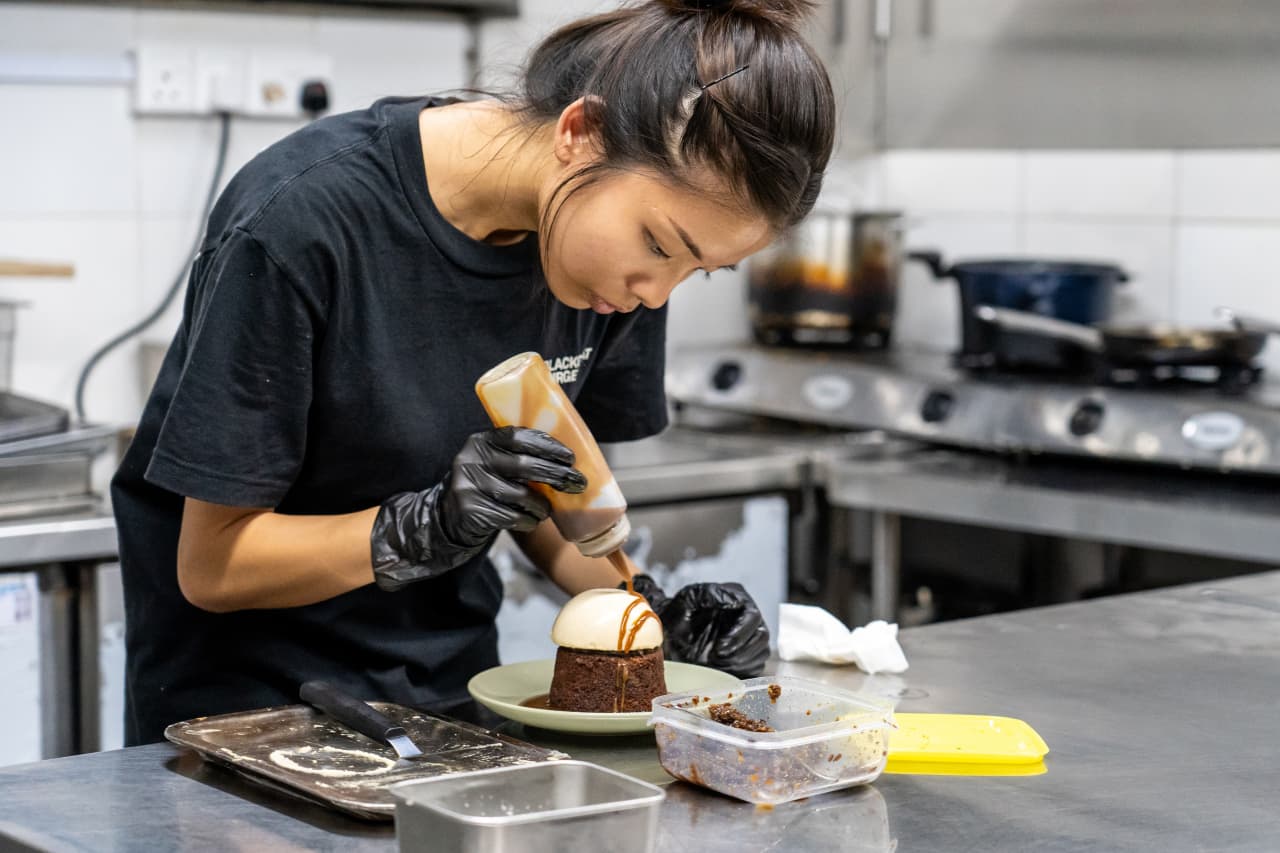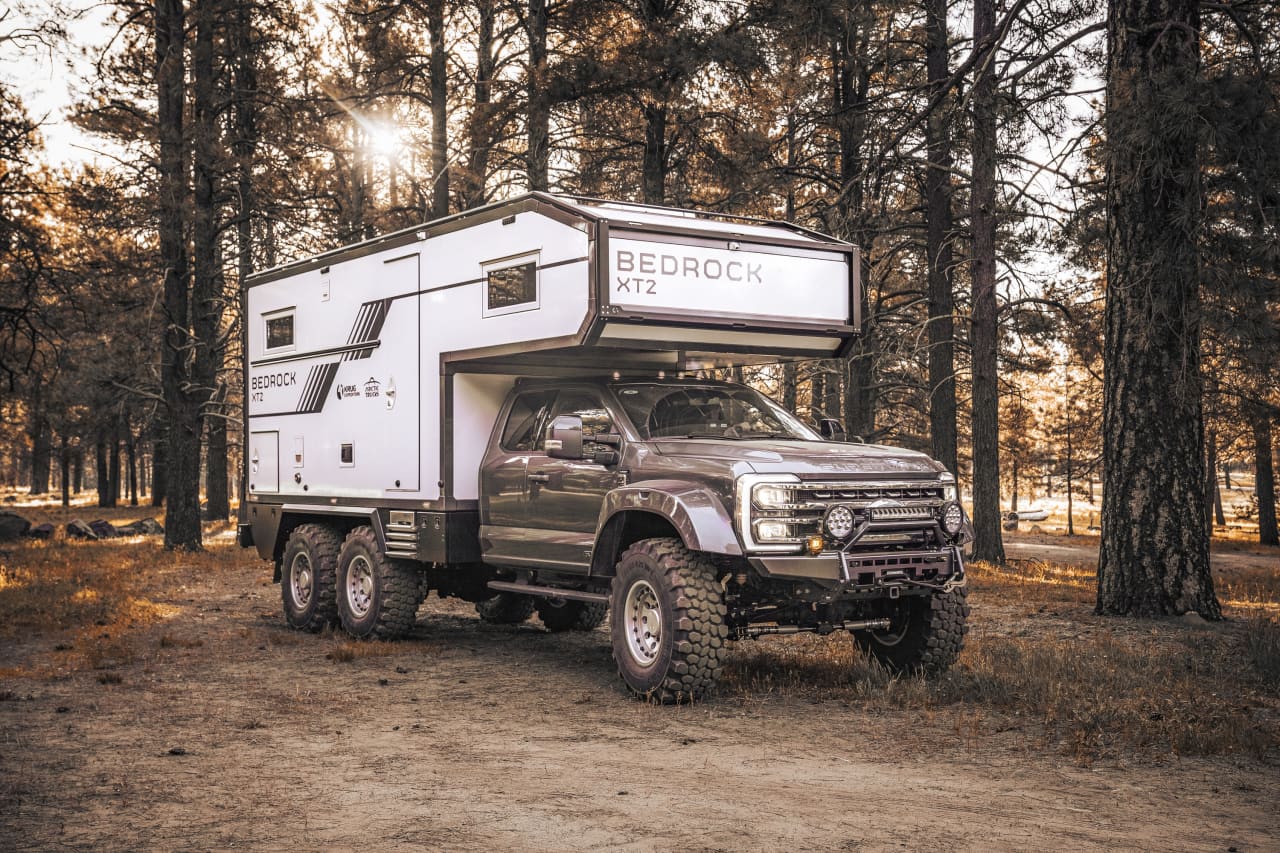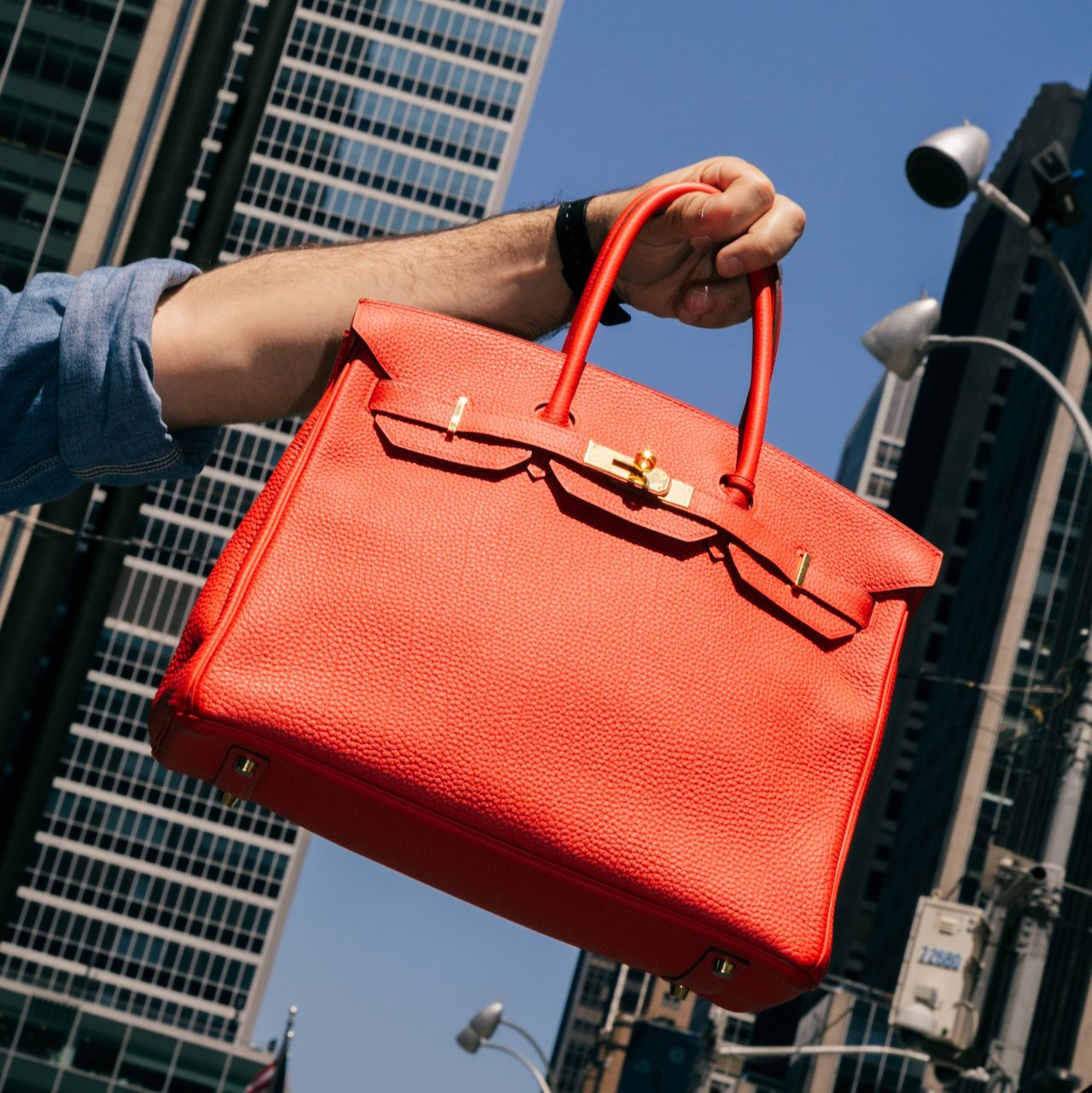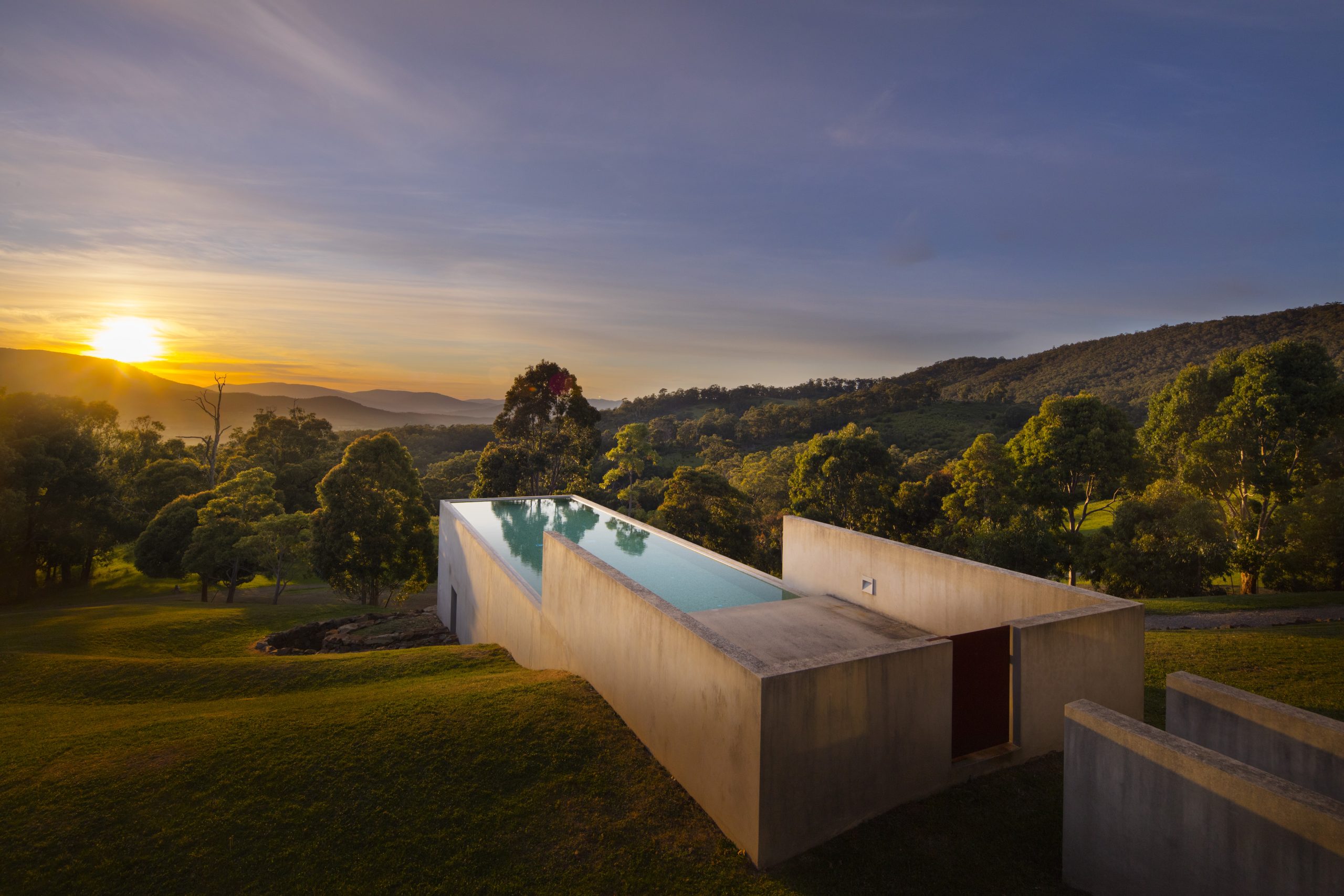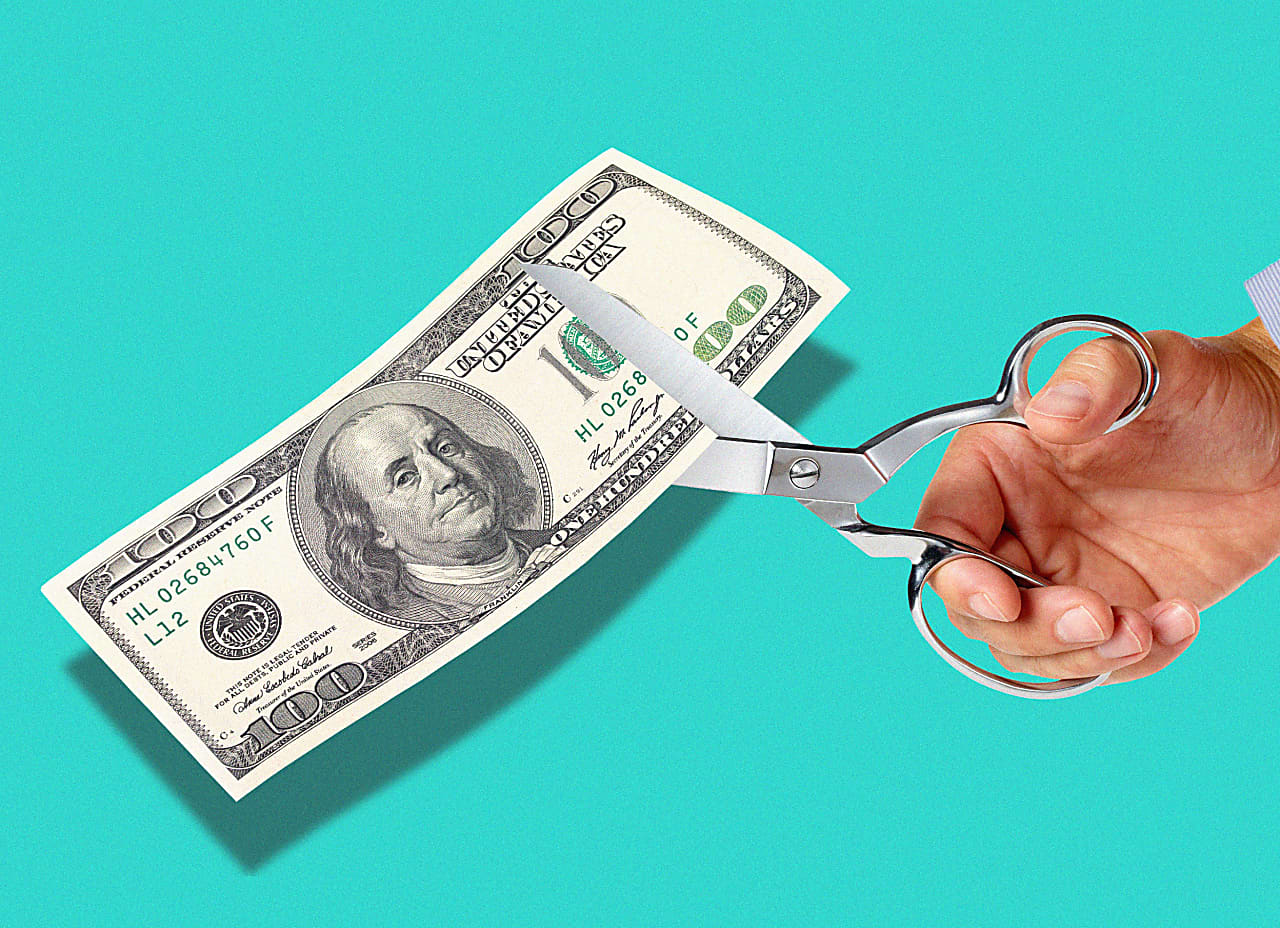How Much Should Your Clothes Cost?
As the cost of living skyrockets, many shoppers are paying extra-close attention to the price of everything from denim to cashmere. We break down what it’s reasonable to pay for four quiet, high-quality menswear staples that will last.
WITH INFLATION at record highs and a possible recession looming, shoppers are scrutinizing clothing price-tags hard right now. Few will welcome what they’re about to see, said Margaret Bishop, a supply-chain expert who teaches at three top fashion schools in New York. “The cost of raw materials, labor and transport, and logistics have all risen…and I don’t see how we could avoid higher retail prices in 2023,” she said.
Even so, you needn’t get ripped off. If you want quiet, well-made items that will last—and you don’t require a hyped brand name or luxury logo, both of which hike up prices—how much should you expect to shell out? Here, we do the math for four wardrobe staples.
1. Cashmere Sweater
Look to pay: $325 and above
Much of the world’s cashmere comes from Mongolia, but not all cashmere goats’ shags are created equal. An all-important, industry-wide grading system delineates fibers according to length and width. Grade A denotes the finest, longest and most expensive cashmere, which creates the softest and most-durable sweaters. Fast-fashion brands peddling sub-$100 knits tend to use Grade B or C hairs, meaning they’re shorter, scratchier and more liable to pill and break down over time, said Edouard Leret, co-founder of New York cashmere brand Leret Leret.
If you crave a cozy sweater with stamina, Grade A is the way to go. But determining the hair pedigree of a prospective purchase isn’t exactly easy: In the U.S., brands aren’t obligated to list grades on tags—“100% cashmere” is no guarantee you’re getting top-quality fuzz. A good workaround? Look to brands that specify Grade A on their websites, and shop for sweaters in-person so you can feel for softness, a telltale sign. Grade A creations needn’t cost eye-watering, four-figure sums. Some brands manage costs by producing close to the cashmere source. Leret Leret, for instance, manufactures in Mongolia, “which allows us to sell at the price we do,” said Mr. Leret. His playful knits are emblazoned with contemporary artists’ designs and start at $475. Simpler sweaters will be cheaper still. Massachusetts brand Billie Todd is a good benchmark: Its unfussy crew necks, which use Grade A fibers spun at a leading Scottish mill, start at $325.
A soft, subdued cashmere knit
- Knit in Scotland, it features a ribbed, sag-resistant neck.
- Solid, ribbed trim at the cuffs and waist refuses to lose shape.
- Grade-A cashmere—the softest, most-durable variety. Sweater, $325, BillieTodd.com
2. Oxford Shirt
Look to pay: $125 (or $175 for made-in-the-U.S.)
“A basic Oxford is pretty simple,” said Atlanta designer Sid Mashburn. What separates a prize button-up from a flimsier, forgettable one are nuances related to construction and finish. Brands make a calculated decision about how much their customer cares about these price-increasing details. For instance, Mr. Mashburn’s shirts are sewn with 22 stitches per inch as opposed to the standard 16. This more time-intensive construction results in a sturdier, more-polished product. Other features to consider: Are the buttons made from cheap plastic or lustrous trocas shell? Is the collar blessed with an inner lining that softens pleasingly over time or is it a cheaper, “fused” collar that remains rigor-mortis-stiff forever?
Mr. Mashburn’s Oxfords, which feature many such nice-to-haves, will set you back $125. He’s able to sell them for this amount—a reasonable sum considering the quality—because they’re sewn in Honduras, where manufacturing costs are lower than in the U.S. and much of Europe.
If you desire a made-in-the-U.S. shirt, prepare to cough up about $50 more. Philip Saul, owner of Boston store Sault New England, produces his shirts a mere 50 miles away in Fall River, Mass. They feature premium details similar to Mr. Mashburn’s but cost $178. “The same workers that make maybe $18 an hour were maybe getting $8 an hour 10 years ago, so it makes sense that quality, made-in-America things should cost more [now],” said Mr. Saul. When manufacturing costs for an item go up $5, he added, “the retail price goes up $10.”
An Oxford shirt with thoughtful details
- A nicely rolled collar not a forever-stiff ‘fused’ variety.
- Pearly, trocas-shell buttons as opposed to plastic versions.
- 22 stitches per inch—sturdier than the standard 16 stitches. Shirt, $125, SidMashburn.com
3. Jeans
Look to pay: $100 for a megabrand, under $300 for an independent maker
All jeans begin with more or less the same quality cotton, but this seemingly simple raw material boasts “one of the most complex. supply chains because it’s so global,” said Ms. Bishop, the professor. Cotton is often grown on one continent and spun on another, before it is transformed into a specific denim via a seemingly infinite choice of washes, blends and finishes—selvedge, vintage, raw, bleached, stretch, you name it. The deluge of jeans styles makes it tricky to determine a universal standard for quality and value, said Aaron Levine, a designer who consults for brands including Aimé Leon Dore and Vince and was formerly senior vice president of men’s and women’s design at Abercrombie & Fitch. The quality of rivets and zippers, and presence of flourishes like embroidery, nudge up the cost, he added.
Arguably a bigger price determinant: the size of the denim brand. “[Household brands] have such massive economies of scale that they receive price breaks on both raw materials and manufacturing,” said Mr. Levine. Such breaks are seldom extended to smaller brands, he said, which is why jeans from independent labels often cost more than, say, Levi’s or Wranglers.
When assessing a potential purchase, Mr. Levine asks himself: “Does the fabric feel like it’s got guts and integrity? Is the stitching straight and even?” Though he might splurge on tough-to-find vintage jeans, he has hard limits when buying new styles. “[Even] if a pair of new jeans fits me perfectly, I won’t go over $300.”
A solid pair of jeans from a big-name brand
- Mid-weight denim washed using less water foreco reasons.
- Precise, even stitching is a sign of quality jeans. Jeans, $98, Everlane.com
4. Leather Belt
Look to pay: $100 max
A great belt can cost $100 or even less. At around that price point, you can get leather of sufficient quality that you see the grain and, when you touch it, “you feel ‘leather’—not plastic or enamel or any finishes,” said Yuki Matsuda, the founder of Los Angeles fashion brands Monitaly and Yuketen. Because it’s rarely complicated to make a belt, raw materials usually account for the bulk of the final price. “Most of [that] goes into the leather. but buckles can incur really wild prices,” said Mr. Matsuda, if they’re a masterfully handcrafted creation rather than a basic brass design.
For some of the best—and best-priced—belts, Mr. Matsuda advises seeking out seasoned, small-scale brands. One such standout: Narragansett Leathers in Damariscotta, Maine, whose owner, Alan McKinnon, has handmade vegetable-tanned, bridle-leather belts since 1969. “When I first started [my most popular models] were $7 and now they are $55, 50 years later,” said Mr. McKinnon.
Can’t make it to a one-man shop in Maine for your new cincher? Visit independent retailers closer to home and peruse their in-house lines. Sault, the Boston retailer, makes agreeably understated belts at a nearby factory; they cost $89 a pop.
A handsome belt featuring first-rate leather and a no-nonsense, stainless-steel buckle
- Hand-stitching around the buckle is straight and even.
- English bridle leather with some graininess—not overly smooth. Belt, $89, SaultNE.com
Blue Buys
We asked men in Midtown Manhattan what they’d fork over for a pair of jeans.
“Probably, like, $50. I love to thrift—that’s where I find most of the jeans I like.”
—Dalton Bleckman, 19, student
“Up to $200. It depends on the occasion, what I’m wearing it for. [I’ll] go down to $40-60 but if it’s a name brand I’ll go up.”
—Frank Henderson, 62, works on convertible bonds desk
“100 bucks, 150 maybe. I like Levi’s. I think this pair [I’m wearing] are from Uniqlo. They’re quite cheap: 30-40 euros.”
—Tommaso Noseda, 32, consultant
“120 bucks. I like AG and Diesel. These [ones I’m wearing] are Zara, [they cost] under 60 bucks, probably.”
—Yoni Ron, 37, works in software sales
 Copyright 2020, Dow Jones & Company, Inc. All Rights Reserved Worldwide. LEARN MORE
Copyright 2020, Dow Jones & Company, Inc. All Rights Reserved Worldwide. LEARN MORE
This stylish family home combines a classic palette and finishes with a flexible floorplan
Just 55 minutes from Sydney, make this your creative getaway located in the majestic Hawkesbury region.
Governments around the world are offering incentives to reverse a downward spiral that could threaten economic growth
The Australian birth rate is at a record low, new data has shown.
Figures from the Australian Bureau of Statistics have revealed there were 286,998 births registered around the country last year, or 1.5 babies per woman.
Birth rates in Australia have been in a slow decline since the 1990s, down from 1.86 births per woman in 1993. Declining fertility rates among girls and women aged 15 to 19 years was most stark, down two thirds, while for women aged 40 to 44 years, the rate had almost doubled.
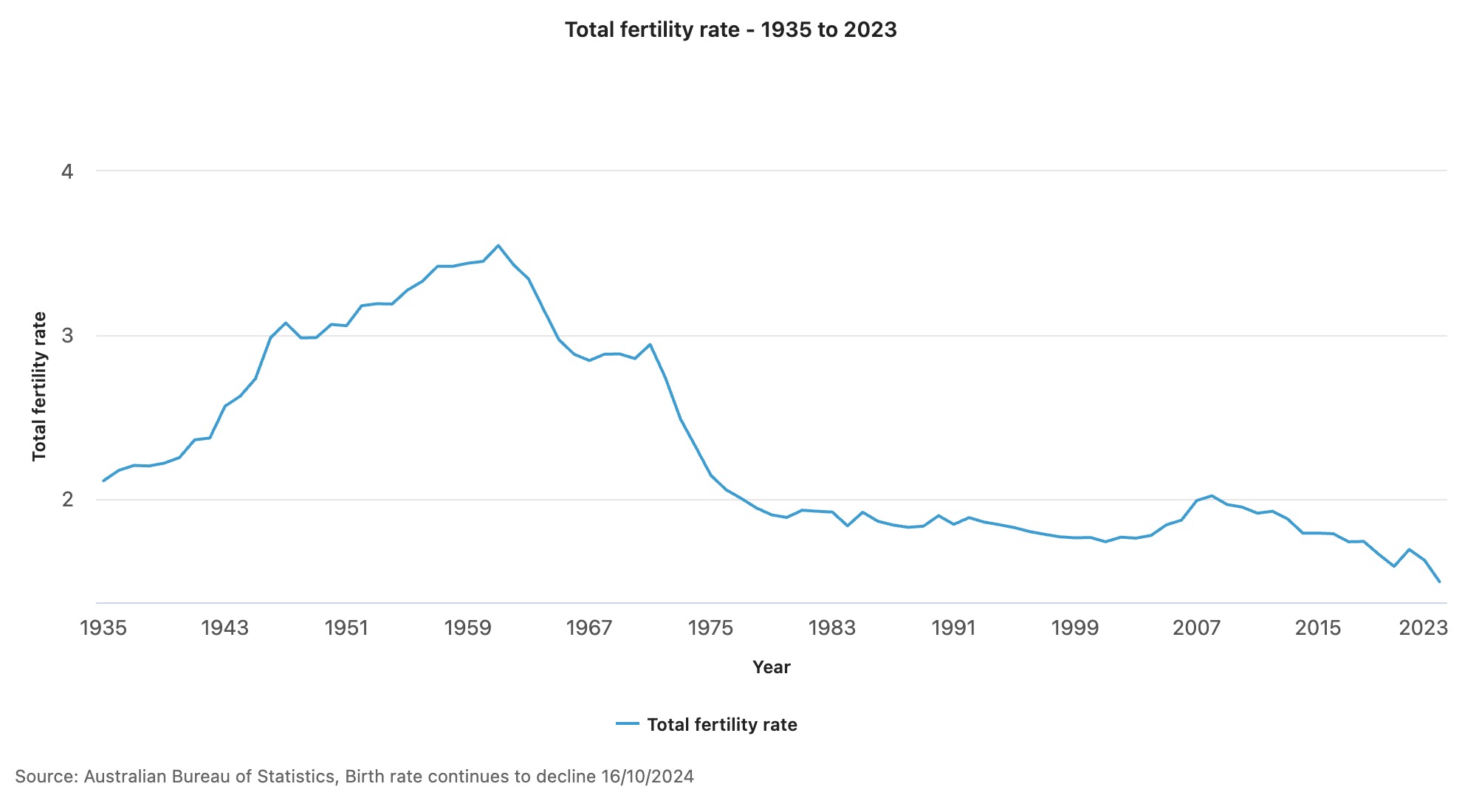
“The long-term decline in fertility of younger mums as well as the continued increase in fertility of older mums reflects a shift towards later childbearing,” said Beidar Cho, ABS head of demography statistics. “Together, this has resulted in a rise in median age of mothers to 31.9 years, and a fall in Australia’s total fertility rate.”
The fall in the Australian birth rate is in keeping with worldwide trends, with the United States also seeing fertility rates hit a 32-year low. The Lancet reported earlier this year that, based on current trends, by 2100 more than 97 percent of the world’s countries and territories “will have fertility rates below what is necessary to sustain population size over time”.
On a global scale, the Lancet reported that the total fertility rate had “more than halved over the past 70 years” from about five children per female in the 1950s to 2.2 children in 2021. In countries such as South Korea and Serbia, the rate is already less than 1.1 child for each female.
Governments around the world have tried to incentivise would-be parents, offering money, increased access to childcare and better paid maternity leave.
Experts have said without additional immigration, lower birth rates and an ageing population in Australia could put further pressure on young people, threaten economic growth and create economic uncertainty. However, a study released earlier this year by the University of Canberra showed the cost of raising a child to adulthood was between $474,000 and $1,097,000.
This stylish family home combines a classic palette and finishes with a flexible floorplan
Just 55 minutes from Sydney, make this your creative getaway located in the majestic Hawkesbury region.









